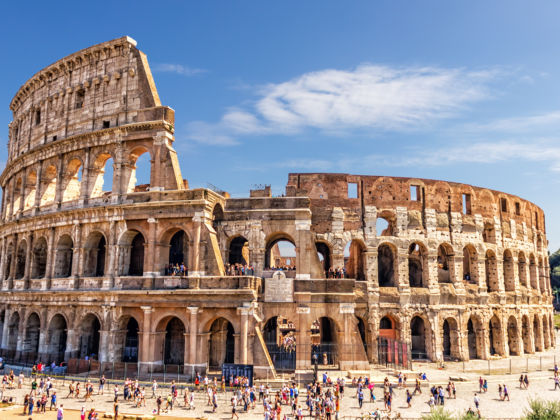1. The Colosseum
Gladiatorial combat, animal hunts, simulated naval battles: what bloodthirsty and testosterone-fueled event didn’t go down at Rome’s Colosseum back in the day?
Completed in 80 AD under the Roman emperor Titus, the three-tiered Colosseum stood 157 feet tall, featured 80 entrances and seated roughly 50,000 people.
It’s still considered to be one of the greatest works of Roman architecture and engineering, but it wasn’t for the faint of heart. During one seven-day festival in 240 AD, 2,000 gladiators, 70 lions, 40 wild horses, 30 elephants, 30 leopards, 20 wild donkeys, 19 giraffes, 10 elk, 10 hyenas, 10 tigers, one hippopotamus and one rhinoceros all died.
By the time the Colosseum closed in 523 AD, it’s estimated that more than one million animals and more than 500,000 people had perished there.
